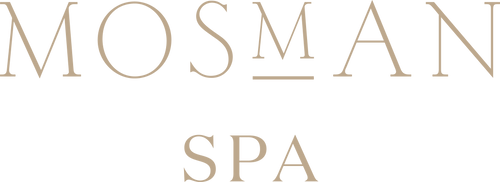LED light therapy is a skin treatment that utilises light wavelengths to treat conditions such as eczema, psoriasis, acne, jaundice and more. LED light therapy has even been shown to combat non-seasonal depression. Different colours of light travel to different layers of skin. In order of least penetrating to most penetrating, the LED light therapy colours are red, blue and near-infrared. The light is shined on target areas and provides benefits based on the type of light.
What is an LED?
A light-emitting diode (LED) is a light source that emits light when an electric current flows through it. The first LED was invented in 1961 and emitted infrared light. LEDs have become more advanced and popular over time. Nowadays, they are capable of emitting light from across the light spectrum. They can emit everything from infrared to ultraviolet light at various intensities. LEDs have been adopted for a myriad of uses, like television displays, traffic signals and camera flashes. One relatively new use of LEDs is skin treatment. These treatments are commonly referred to as LED light therapy.
What are the benefits of LED light therapy?
Light varies in frequencies and wavelengths, so the benefits one might get from LED therapy will depend on the type of light being used in the treatment. Different types of light can stimulate different cells or target different skin concerns. Often a skin therapist will use multiple different LED light colours to target different skin concerns. The general benefits of LED therapy are that it is a painless, non-invasive procedure that does not damage the skin. Additionally, a typical LED light therapy treatment is not time-consuming. Some common skin concerns that are targeted by LED light therapy are acne, rosacea, dermatitis, pigmentation and eczema.
What are the different types of LED light therapy?
Blue Light
Blue LED light therapy targets the dermis. This is the second outermost part of the skin. Blue light LED therapy targets the sebaceous glands in the dermis. The sebaceous glands are located beneath hair follicles and are responsible for producing oil to stop your skin and hair drying out. They are physiologically necessary but can make the skin excessively oily, leading to skin irritation and acne. Using blue LED light therapy, the sebaceous glands can be targeted, reducing their oil production. This reduction results in improvements for acne. Blue light LED therapy can target bacteria that cause acne and skin spots to improve the skin’s clarity. It is most useful early on in an acne outbreak and targets breakouts below the skin. Blue light therapy can also reduce redness in the skin. This makes it a popular treatment for rosacea, eczema and dermatitis.
Red Light
Red LED light therapy targets the epidermis. This is the outermost part of the skin. Absorbing red LED light stimulates collagen production in the skin. This smooths out your skin and makes wrinkles and fine lines appear less visible. Red LED light therapy energises skin cells. This allows them to renew and replace dead skin cells more quickly, which helps fade age spots. It also helps to stimulate elastin production. This gives skin more elasticity and firmness. These benefits make red LED light therapy a good treatment for anti-ageing, pigmentation and creating a healthy glow.
Near Infrared
Near-infrared therapy LED light can penetrate as deeply as the hypodermis, the deepest part of the skin. This allows it to provide unique benefits. Near infrared light stimulated fibroblasts. Fibroblasts are a cell type that stimulates the growth of connective tissue. They promote collagen and elastin to help the skin with healing, firming and tightness. Near-infrared light also stimulates mitochondria to promote greater cell regeneration. Stimulating these things in the skin and targeting deeper tissue allows near-infrared LED light to provide benefits for wound healing, pain management and musculoskeletal pain. It also provides skin benefits like rejuvenation, reduced redness or irritation and reduced pigmentation.
Triwave
Triwave LED light therapy uses a combination of blue, red and near-infrared LED light. It carefully utilises each type of light for a more comprehensive skin treatment. It can provide the benefits of all three treatments in one.

What does LED light therapy look like?
LED light therapy is performed by a dermatologist or licensed aesthetician to ensure correct and safe treatment. LED light therapy involves clients wearing goggles to protect their eyes. Additionally, no makeup should be worn during an LED light therapy session. The clinic will have a large light that the patient is required to sit or lie under for the duration of their treatment. While the face is the most popular area for LED light therapy, it can be used for other areas of the skin as well. An LED light therapy session typically takes 20 minutes. How many sessions a client will need to undergo depends on what skin ailment is being treated. On average, 8-12 sessions over a few months are usually enough to deliver positive skin results. Following that, going in occasionally for maintenance is recommended. There are also home LED light therapy treatments available, but they use lower light frequencies and will be less effective than treatments done by a professional.
Is LED light therapy right for me?
LED light therapy is suitable for most people as it is a gentle way of improving skin health – particularly for individuals with high skin sensitivity. However, people suffering from undiagnosed rashes should consult a doctor to ensure the LED light doesn’t aggravate the condition. LED light therapy may not be suitable for you if you are using certain medications. For example, if you are taking Accutane to treat acne, LED light therapy may cause inflammation or redness. In most cases, LED light therapy is perfectly safe to try. It can work very well in conjunction with other treatments.
One of Mosman Spa’s specialists can guide you towards which treatment will be best for your skin. Call or email us today!
